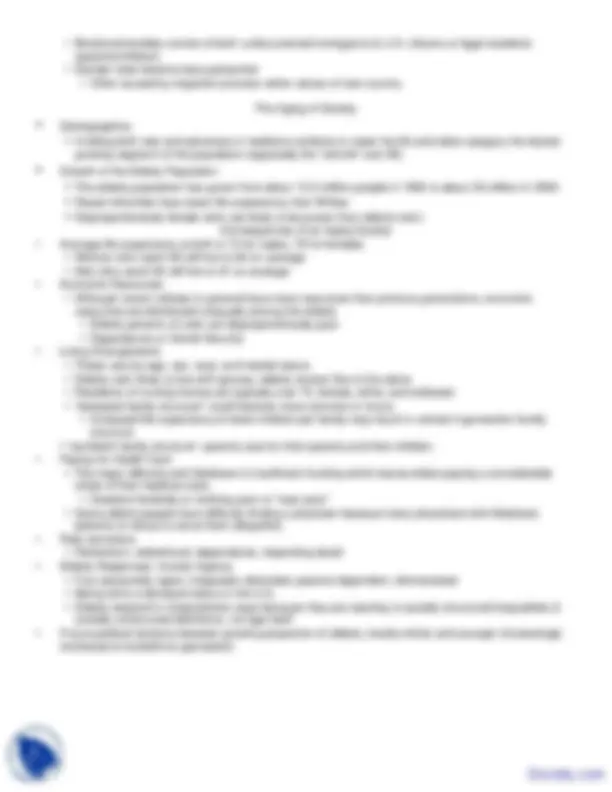




Study with the several resources on Docsity

Earn points by helping other students or get them with a premium plan


Prepare for your exams
Study with the several resources on Docsity

Earn points to download
Earn points by helping other students or get them with a premium plan
Community
Ask the community for help and clear up your study doubts
Discover the best universities in your country according to Docsity users
Free resources
Download our free guides on studying techniques, anxiety management strategies, and thesis advice from Docsity tutors
Economicand Demographic Upheavals in Societyand Family Formation, Globalizationand Structural TransFormation, From Manufacturing to Services, The New Economyand Families, Coping Strategies For the New Economy, Classand the New Economy, Immigrationand the Changing Racial Landscape are key points from this lecture handout.
Typology: Exercises
1 / 4

This page cannot be seen from the preview
Don't miss anything!



Economic and Demographic Upheavals in Society and Family Formation
Globalization and Structural Transformation
From Manufacturing to Services
The New Economy and Families
Coping Strategies for the New Economy
Class and the New Economy
The Aging of Society
growing segment of the population (especially the “old-old” over 85)
Consequences of an Aging Society